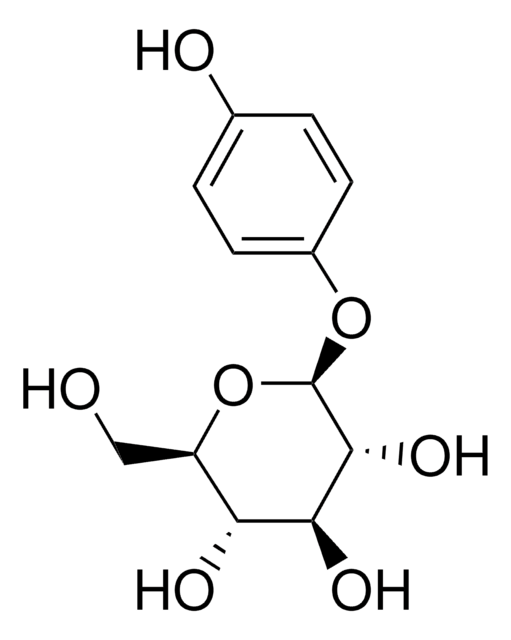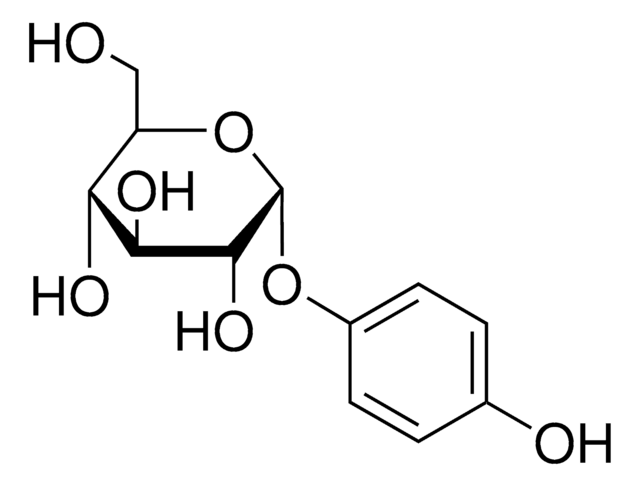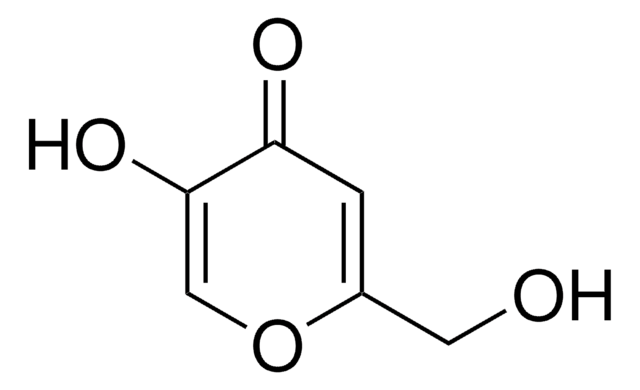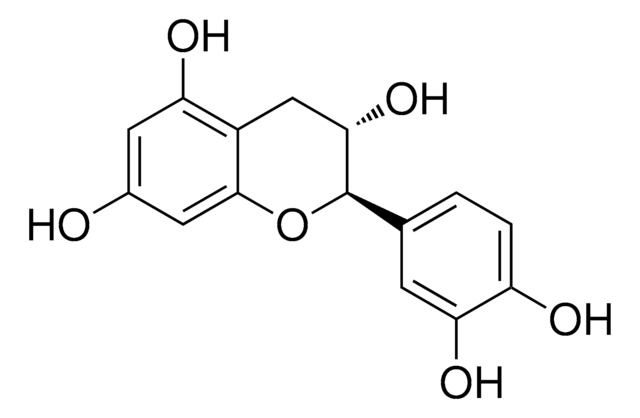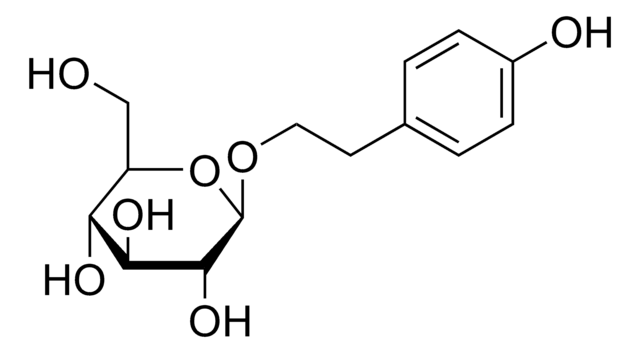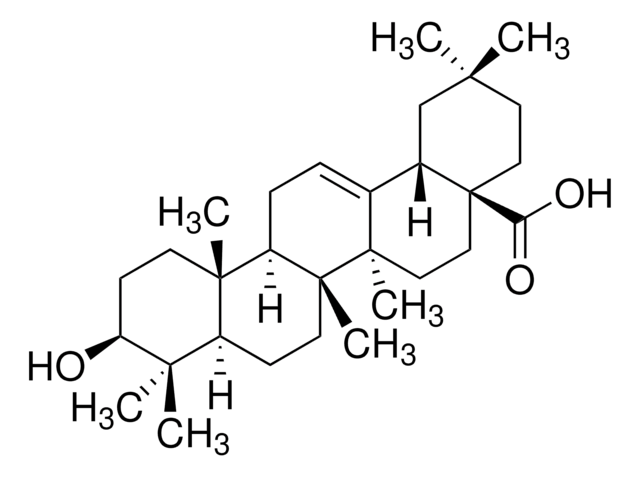Kluczowe dokumenty
66468
Arbutin
analytical standard
Synonim(y):
4-Hydroxyphenyl-β-D-glucopyranoside, p-Arbutin, Hydroquinone β-D-glucopyranoside
About This Item
Polecane produkty
klasa czystości
analytical standard
Poziom jakości
Próba
≥98% (HPLC)
aktywność optyczna
[α]/D -64.0±2.0°, c = 3 in H2O
okres trwałości
limited shelf life, expiry date on the label
metody
HPLC: suitable
gas chromatography (GC): suitable
Zastosowanie
food and beverages
Format
neat
temp. przechowywania
2-8°C
ciąg SMILES
OC[C@H]1O[C@@H](Oc2ccc(O)cc2)[C@H](O)[C@@H](O)[C@@H]1O
InChI
1S/C12H16O7/c13-5-8-9(15)10(16)11(17)12(19-8)18-7-3-1-6(14)2-4-7/h1-4,8-17H,5H2/t8-,9-,10+,11-,12-/m1/s1
Klucz InChI
BJRNKVDFDLYUGJ-RMPHRYRLSA-N
Szukasz podobnych produktów? Odwiedź Przewodnik dotyczący porównywania produktów
Powiązane kategorie
Opis ogólny
Zastosowanie
Opakowanie
Polecane produkty
Kod klasy składowania
11 - Combustible Solids
Klasa zagrożenia wodnego (WGK)
WGK 3
Temperatura zapłonu (°F)
Not applicable
Temperatura zapłonu (°C)
Not applicable
Wybierz jedną z najnowszych wersji:
Masz już ten produkt?
Dokumenty związane z niedawno zakupionymi produktami zostały zamieszczone w Bibliotece dokumentów.
Klienci oglądali również te produkty
Nasz zespół naukowców ma doświadczenie we wszystkich obszarach badań, w tym w naukach przyrodniczych, materiałoznawstwie, syntezie chemicznej, chromatografii, analityce i wielu innych dziedzinach.
Skontaktuj się z zespołem ds. pomocy technicznej